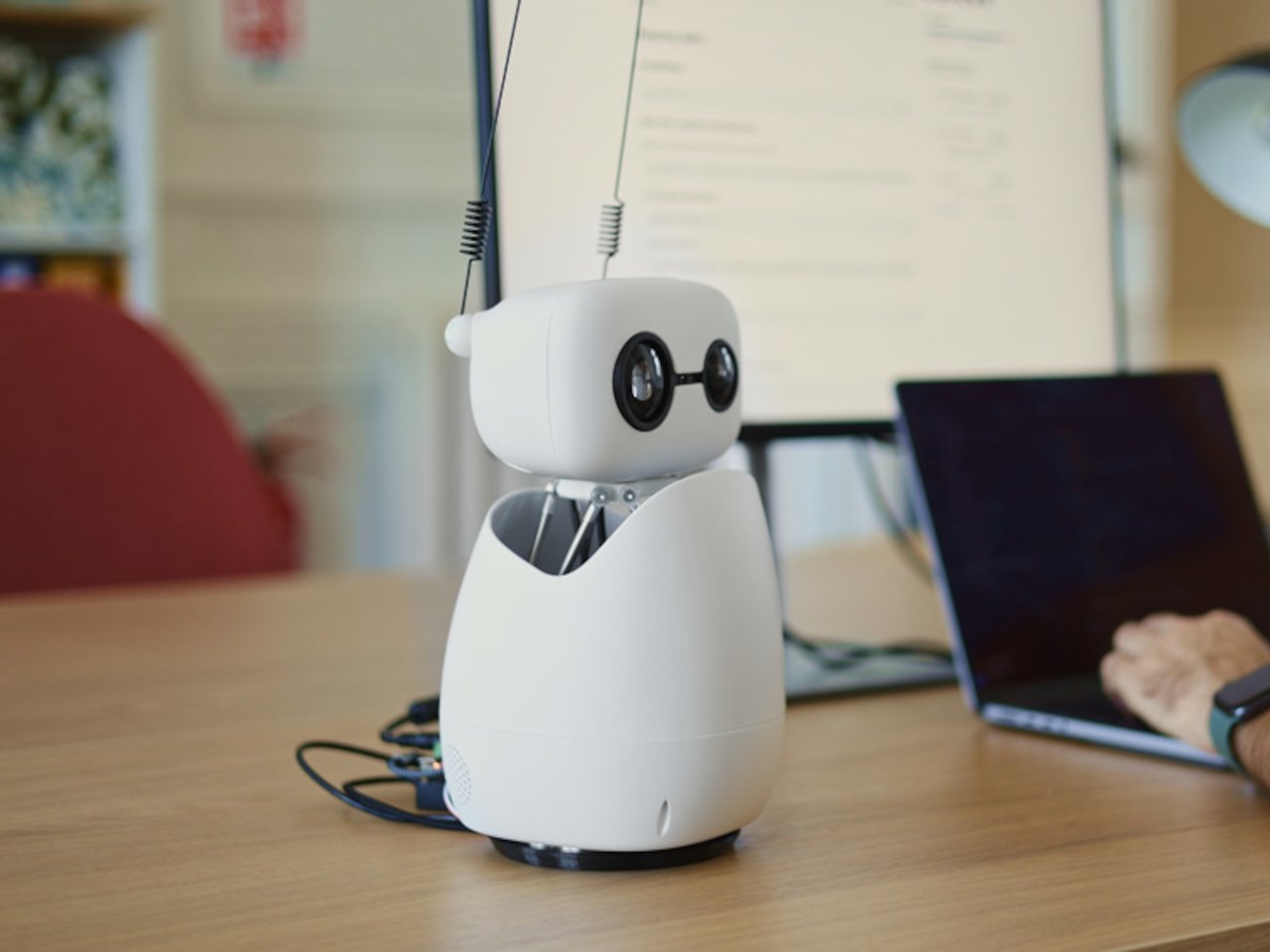Most robots today look like they belong in a factory or a science fiction movie, with their cold metal frames and intimidating mechanical movements that make you think twice about getting too close. There’s something inherently off-putting about the way most robotic designs prioritize function over approachability, creating machines that feel more like tools than companions, even when they’re supposed to help us in our daily lives.
That’s what makes Reachy Mini such a refreshing departure from the typical robotics playbook. This compact desktop robot from Hugging Face feels more like a curious pet than a piece of industrial equipment, with its expressive LED eyes and animated antennas that give it genuine personality. At just 11 inches tall and weighing 3.3 pounds, it’s sized more like a stuffed animal than a traditional robot.
Designer: Hugging Face, Pollen Robotics
Hugging Face, the machine learning platform often called “the GitHub of AI” for its vast community of developers sharing AI models and datasets, has taken its first step into physical robotics with this charming little companion. The company’s open-source, community-driven philosophy translates beautifully into hardware, creating a robot that’s designed to be modified, customized, and shared rather than locked down by proprietary restrictions.
The design itself is surprisingly endearing, with two animated antennas that move expressively and a head that can rotate with six degrees of freedom, giving Reachy Mini an almost pet-like quality. When it goes into sleep mode, it actually shrinks down to about 9 inches tall, which adds to its charm in a way that most tech products completely miss. The wide-angle camera and 5W speaker are integrated so seamlessly that they don’t disrupt the friendly aesthetic.
What’s particularly clever about Reachy Mini is how it comes as a kit with 3D-printable components, making customization not just possible but encouraged. You can choose between a Lite version for $299 that connects to your computer, or the full autonomous version with a Raspberry Pi 5 that can operate independently. The fact that everything is open-source means you’re not just buying a robot, you’re joining a community of makers who share modifications and improvements.
The AI integration is where things get really interesting, though. Reachy Mini taps directly into Hugging Face’s ecosystem of AI models, giving it conversational abilities, object recognition, and even emotional expression that feels surprisingly natural. You can have actual conversations with it, use it as a coding tutor, or even turn it into an interactive art project, all through simple Python programming that’s accessible to beginners.
Of course, there are some practical considerations to keep in mind. The early development phase means you’re essentially becoming a beta tester, and the full autonomous version won’t ship until fall 2025 at the earliest. The Lite version, arriving late summer 2025, requires a tethered connection to your computer, which limits its mobility somewhat.
The educational potential here is enormous, particularly for STEM programs where students can learn programming, AI, and robotics through hands-on experimentation rather than abstract theory. The growing community around Reachy Mini is already sharing projects, modifications, and educational resources that make advanced robotics accessible to everyone, not just engineering students.
Reachy Mini succeeds because it understands that the future of robotics isn’t about creating more sophisticated machines, but about making technology more human-centered and approachable. By combining expressive design with open-source accessibility, it proves that the most innovative robots might just be the ones that feel less like robots and more like companions we actually want to spend time with.
The post Open-Source Robot Reachy Mini Brings AI to Your Desktop first appeared on Yanko Design.

